
With on-off lockdowns and tricky travel restrictions, it's been yet another year of Covid disruption. For many of us the outdoors has been more vital than ever, a place to escape the dismal headlines and breathe the air unmasked. But when we've been unable to get out and about freely, we've still had books to fall back on, plotting future trips to sunkissed seaside rock, or striding the hills in our imagination.
Despite all the disruption, 2021 has been a good year for outdoor literature. From glossy guidebooks to biographies, accounts of epic journeys to mountain-related fiction, here the team at UKClimbing and UKHillwalking pick their stand-out titles of the last twelve months.
Charlotte McDonald
Dorset
by Mark Glaister and Pete Oxley (Rockfax)
Having climbed in Dorset over many years, I was excited to hear that Rockfax had been busy putting together a new guide to cover Portland, Swanage and Lulworth, to update the 2012 version.
It is possible to climb in Dorset all year round, with climbing in t-shirts in the middle of winter not being uncommon. It is deservedly a popular area for climbers, and will be a good place to visit to climb off those Christmas dinners.
Whether you're already familiar with the Rockfax climbing guide layout, or it's new to you, you will not be disappointed here. This book is uncomplicated to navigate (tabs for each area down the side), with each crag introduced with a summary and notes on the approach and conditions. Parking for each crag is identified with GPS coordinates, as in the past book, but this version also includes a much more helpful QR code which will take you right to the parking.
One of my favourite things about Rockfax books is the clarity of the route descriptions (no "route 'a' can be found 5 metres to the left of route 'b'. Route 'b' can be found 5 metres to the right of route 'a'…"). The routes in this book are clearly identified on photo topos with a brief route description providing key points, grade, and stars if warranted.
As can be expected from Mark Glaister's books, the photography is on point, with inspiring shots page after page (for a couple of examples, see p56 for classic Portland and p393 for a sweeping view of the cliffs at Swanage). Since the last guidebook was released, drone photography has come on in leaps and bounds, and this is clear to see with the new sea cliff pictures which provide an overview of the areas and make crag identification and navigation easier.
The climbing in Dorset is varied; sport, trad and some deep water soloing are all covered in this book's 608 pages. Over the last decade the sport climbing in Portland has changed, with some crags disappearing (natural cliff erosion) but many new routes also arising. A large number of new lines have been included, all with new pictures, giving those familiar with the area a good quantity of new routes to explore. The number of routes covered in the Swanage sections has also been increased, for those interested in some atmospheric trad (and sport) climbing.
Although the new Dorset guide can also be accessed on the Rockfax Digital app, there is still something very enjoyable about having an actual book to flip through on a dark winter evening and take inspiration from. So roll on 2022, and some new Dorset climbing adventures with this book!
Dan Bailey - UKH Editor and Gear Editor
The Munros
(Scottish Mountaineering Press)
These days hillwalking routes can be browsed for free online - not least on the UKHillwalking Route Cards. In the crowded field of Munro guides it takes something for a paper book to stand out, and primarily I'd say it needs to be a desirable object. The fourth edition of The Munros not only has the most authoritative and comprehensive route descriptions to Scotland's 3000-foot peaks currently available in print, but it looks great too, with a smart layout and quality photography that put it miles ahead of the previous edition in terms of presentation. This is a guidebook worthy of the coffee table.
All the standard routes are covered of course, but alternatives get more than a passing look-in too, and the occasional box-out section on mega multi-peak rounds will broaden the appeal for hill runners and more ambitious walkers. Beefed-up route descriptions, clear and attractive maps, comprehensive information on Tops, reference to mountain bike approaches, the inclusion of the all-important Tables (previously published separately) - it's all here. By any measure, this is the best guide to the Munros yet produced. There's a mountain of Scottish walking to be found between its covers, and that's worth every penny of its £30 cover price. And just to seal the deal, all profits go to the Scottish Mountaineering Trust. If you're buying only one Munros guide then there's no competition - get this one.
- Read our full review here:
The Book of the Bivvy
by Ronald Turnbull (Cicerone)
"A comfy bivvy is like a short long-distance walk, or a non-intoxicating beer" writes Ronald Turnbull. "Comfort isn't what it's about. It's about having your head out in the wind and your nose pointing straight at the stars."
First published nearly 20 years ago, and now in its third edition updated for 2021, this little gem has become something of a cult classic, under the mainstream outdoor radar but loved by those in the know. More than a simple how-to guide, The Book of the Bivvy is a fond celebration of this absurd pastime, astutely capturing the soggy misery, and the ultimate reward of nights in green nylon.
By pretty much any other writer, a whole book about bivvying might sound as dull as a drizzly night in a ditch in Norfolk, but Turnbull's perfectly understated wit lifts it to a different plane. There are amusing observations and funny anecdotes aplenty, with a lot of hard-won advice on what not to do. You even get several bivvy-friendly route guides. It's full of lovely photos too, many of them doing a good job of promoting what is in essence quite a hard sell.
Who on earth would choose to cocoon themselves in a clammy bag, when they could stretch out in the luxury of a modern midge-proof tent weighing barely more? Ronald Turnbull, for one, and he offers plenty of reasons why you might like to give it a whirl too, for fun not just necessity. A frequent contributor to UKHillwalking (other outdoor media are available), he has written a lot of books, but here he's at his quirky best.
Hamish - The Fox of Glencoe
Edited by Diziree Wilson (Scottish Mountaineering Press)
"Few people cram as much into a lifetime as Hamish did" writes Deziree Wilson, who has done a brilliant job in reducing the mountain of words both by and about Hamish MacInnes into this one hefty volume.
Dubbed the Fox of Glencoe for his astute problem solving under pressure, MacInnes was respected in the close-knit postwar climbing community, a giant of mid-20th-Century mountaineering up there with the biggest names of his day. Including notable first ascents in Scotland and far beyond, a series of innovations in Mountain Rescue, and work on a number of big films, his is the legacy of a dedicated and talented polymath. A motley collection of writings spanning a very full nine decades of life, The Fox of Glencoe is a fitting tribute to a unique character, and his many and varied adventures. It's a great-looking book too, with a stylish layout and many evocative period photographs. An ideal Christmas present for the mountain lover in your life (maybe that's you).
- Read our full review here:
Twisted Mountains
by Tim Woods (Little Peak Press)
This collection of 'tall stories from Britain's high places' is a Tales of the Unexpected for the hills, a wry, amusing subversion of the standard tropes of the outdoors.
In these snappy vignettes, most of which end with a satisfying twist, author Tim Woods has a lot of fun assembling a quirky cast of misfits and misanthropes, giving fictional voice to characters often overlooked in the literature of hills and hill-going. There's the disgruntled Peak District farmer unselfconsciously alienated from the visitors on which his livelihood has come to depend; the hostel warden plotting foul play in the mires of Dartmoor; and the ne'er do wells on a heist, hiding out in a godforsaken Scottish bothy (the author channeling Irvine Welsh to good effect).
Dark, witty, perceptive, and occasionally even lyrical, Twisted Mountains would be great read with your feet up by a bothy fire; just don't go alone.
- You can read an extract here:
The Earth Beneath My Feet
by Andrew Terrill (Enchanted Rock Press)
In spring 1997, a young Andrew Terrill embarked on an unlikely venture. His solo walk from the southern tip of Italy to the North Cape of Norway trod the full length of the Apennines, the Austrian Alps and the forests of central Europe in winter, and the vast empty spaces of Scandinavia - an epic journey of well over a year that led him on a winding 7000-mile odyssey through the wilder reaches of our Continent.
Written at the remove of two decades, and based on the copious journals scribbled by torchlight in his tiny one-man tent at night, The Earth Beneath My Feet is part one of a two-volume set, covering his transition from green ingenu lost in the densely wooded hills of Calabria, to seasoned mountain traveller revelling in the challenge of the snowbound Alps. Without the tedious erudition that bedevils a lot of modern nature writing, it's told in refreshingly straight-talking prose which feels true to the experience of actually being there.
It's a thoughtful and engaging account, and I'm looking forward to volume two, On Sacred Ground, which should be out in 2022.
- For our full review see here:
The 1033 High Hills of Britain
by Alan Dawson (Pedantic Press)
"There are far more high hills than most walkers realise because their thoughts have been constrained by categories, guidebooks and magazines... there are hundreds of high hills that offer excellent walking where hardly anyone goes." So begins this unexpected book, which sets out to knock down the walls (and a few cairns) that tend to dictate our hillgoing habits.
Written by Alan Dawson, whose previous work The Relative Hills of Britain became a seminal text for the more committed breed of hill bagger, The 1033 High Hills of Britain is not a guidebook in the standard sense, but something a little different and a lot denser. It's a bumper reference book based around a new hill list, peppered with personal anecdotes and interesting meanders along the way that lift it above the somewhat dry realms one might associate with hardcore bagging. These include contributions from a number of other authors.
The 1033 hills in question are all over 838m high if found on mainland Britain, or 770m on an island; in addition there's some very complex reasoning to do with elevation, the main take home of which being that the height gain required for inclusion in this book is relative to absolute summit height, but nowhere near the big number required in a list like the Corbetts. It may all sound arbitrary, and of course all height-related lists are, but nevertheless there's a logic to the system that Dawson explains in quite some detail. Why 838m, not a round 850? He makes no bones about the fact that this allows him to include some hills he likes. Well, this is his list and his book - and who could argue with stretching things in order to include Beinn Resipol, and An Cliseam?
The centre of gravity in this book lies far north of the Scottish border, but that's because we have the overwhelming bulk of the high hills, as well as all the best ones. Each hill group is defined by topography, but while there's a density of geographical information and plenty of tips to be gleaned, you're on your own when it comes to finding the way. This book will not hold your hand, and assumes a degree of competence and self reliance on the part of the reader. I did say it's not a guide.
In amongst the hill chapters you'll stumble across digressions on the psychology of escape and flow, and musings on free will, meaning and motivation - all seen through the lens of hill bagging. More conventionally hill-relevant asides include the intricacies of height surveying, notes on language and pronunciation, and a whole chapter devoted to a diatribe against cairns. It's probably hard to picture how all this can hang together with detailed chapters on hill groups, and accounts of climbing them, but somehow it does. Dawson's humour helps the whole thing flow. My only real gripe is with the very odd Photoshop job on the front cover.
I'm about as far from being a list ticker as any hillwalker alive, but despite myself I find it engrossing. The 1033 High Hills of Britain is witty, erudite, and more than a bit leftfield. If you thought you knew Britain's biggies pretty well, think again. Then go out and buy this book.
I Belong Here
by Anita Sethi (Bloomsbury)
A race-hate crime served as the catalyst for this book. A brown woman abused by a white man - it happens every day. But though crushingly mundane, racism is not something anyone should simply have to accept. Determined to make something positive from a harrowing experience, Anita Sethi set out to discover the Pennine Hills, the skyline above Manchester, the town of her birth, but a landscape that we do not all experience equally.
"That summer following the hate crime, I was filled with longing for a long journey in which I could explore my sense of belonging" she writes (she does seem to like alliterative flights!). "I pined for Britain's oldest long-distance footpath, the Pennine Way".
While what follows is not an account of actually walking the whole Way, her journeys through the hills are written in an accessible and open-hearted style that marries the personal with discussions of wider issues.
Britain may be a diverse country, but our rural spaces are disproportionately white; the outdoors may be free for all, but remains by and large a middle class enclave; nature and travel writing (and let's add outdoor journalism) try to touch on universal themes, but are still genres dominated by white men. Books like I Belong Here go some way towards redressing this historical imbalance. I'm not a huge fan of Sethi's writing style, but this is a timely book, written from a rarely heard perspective.
That the message carried in its title should need to be stated at all says a lot about the dismal backwardness of Brexit Britain. In gently but firmly staking her claim to her own country, and embracing the rural landscape as a place for everyone, no matter their background, Anita Sethi has spoken for the many thousands of people who are finding a path to something better.
Rob Greenwood - UKC Advertising Manager
Mountain Stories
by Heather Dawe (Little Peak Press)
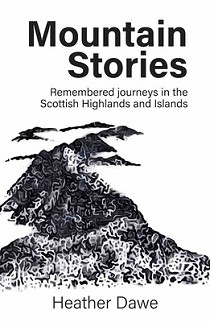
When I setup Crag Notes back in August 2019 I did so primarily to promote a particular style of writing. Mountain Stories encapsulates that style perfectly, where the focus is - first and foremost - on place, but also the experiences we have within those places, and the impact that those places (and experiences) have on us. Mountain Stories differ in several ways, the first of which is that they're a little longer, and - as the name suggests - about mountains, as opposed to crags.
Not just any mountains either, but Scottish Mountains - mountains that really mean something to those that have spent enough (or any) time among them. Whilst I have been up some of the mountains featured within, and enjoyed those as a result of a lived experience, I equally enjoyed the accounts of hills I haven't yet been on. This book was inspired as a result of the lockdown, and not being able to get up into the highlands; however, even outside of lockdown, living in the Peak District, Scotland's hills feel distant - hence it's the perfect (non-alcoholic) tonic to help me recall their brilliance.
Joss Naylor's Lakes, Waters and Meres
by Vivienne Crow (Cicerone)

For those that don't know, the Lakes, Waters and Meres Challenge route takes in all 27 of the largest bodies of water in the Lake District, covering 105 miles and over 4200m of ascent (14,000ft in old money). Unlike the Bob Graham, it isn't a 'round', as it doesn't start and finish in the same place. The book itself goes into this, and why, plus extra detail on the development of the route and the history that surrounds it.
If you're even vaguely into fell running, or walking in the Lake District, then this book is an absolute must.
- Read our full review here:
The Culm Coast and Baggy Point
by Mark Kemball (The Climbers' Club)
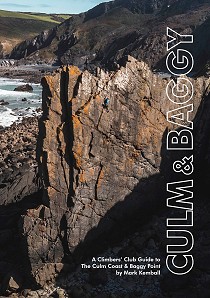
Brimming with almost as much character as it has crags that have fallen down, The Culm Coast and Baggy Point is a feast for the eyes - not least because it'll be the first time you'll have actually seen full colour topos to a great many of the crags within. It's a guide, and an area, to get lost in (metaphorically, not literally) as there are venues both on and off the beaten track which provide something of interest for everyone - except those who are into sport climbing.
For those in search of adventure, a treasure trove awaits within the pages of this guide. How deep you delve largely depends on your constitution (and trust me, there's some serious depth to dig into out there on the Culm).
- Read our full review here:
The Mountain Path
by Paul Pritchard (Vertebrate Publishing)
It was an honour interviewing Paul Pritchard at this year's Kendal festival, not just because of how much his writing has meant to me over the years, but also because of how much his writing has evolved.

Nowhere is this evolution more apparent that in his new book The Mountain Path, which differs from his three previous books - Deep Play, The Totem Pole and The Longest Road - insofar as the focus is primarily philosophical, as opposed to autobiographical.
The Mountain Path is about what climbing can teach us and the lessons we can learn from it. Given that a great many of us dedicate days, weeks, months and years of our life to it as an activity, and think a lot about its significance to us, Paul's insight into the role 'The Mountain' plays is one of great importance and one that feels particularly important in our present age.
- Read more here:
Natalie Berry - UKC Editor
Beyond Possible: One Soldier, Fourteen Peaks – My Life in the Death Zone
By Nimsdai Purja (Hodder & Stoughton)
Beyond Possible, by trailblazing Nepali climber and star of the current Netflix hit 14 Peaks Nimsdai 'Nims' Purja, tells the story of his multiple world record-breaking feat achieved in 2019 and the unconventional life that led up to it. Having religiously followed in his father and older brothers' footsteps to become a Gurkha – the goal that became his 'God' and for which he later earned an MBE – Purja joined the British Army's prestigious Special Boat Service, where he discovered a passion and aptitude for pushing his limits at altitude, despite having grown up in a low-altitude village in Nepal to a poor, non-mountaineering family. Inspired by his hard-working mother, Purja is compelled to both test his mettle and do well by others. He constantly asks himself: 'What if?' and 'What then?'

Buoyed by his self-belief, Purja sets himself a seemingly impossible challenge: to summit all fourteen eight-thousand metre peaks in just seven months, 'smashing' the previous record of just under eight years. To do so, Purja resigns from the SBS, putting his livelihood and family relationships at risk. 'Project Possible' becomes an ambitious challenge, mooted as a pipedream by some ('like swimming to the Moon'), who viewed Purja as a novice mountaineer with eyes bigger than his abilities. Purja faced his fair share of doubters before and during his rapid series of ascents to the summits of the world's highest and most dangerous mountains.
Purja comes across at times as utterly impervious to self-doubt. Understandably, anybody with the confidence and resilience forged in the military and expressed in record-breaking mountaineering feats is bound to engage in some form of big-talk and bombast, and this haughty self-talk is peppered throughout. However, it's clear that such an attitude is necessary to succeed when leading in both war zones and on the world's highest peaks. 'I'm scared because it means something,' he writes.
It would be easy to cherry pick lines - 'Your extremes are my normality'; 'where other people began to fail, I came alive' – and peg Purja as arrogant, but the wider picture he paints is much different: Purja cares deeply for his family, showing gratefulness for their supporting his education and endeavours; he cares deeply about giving Nepali climbers and Sherpas the recognition and opportunities they deserve; he rescues multiple climbers from the Death Zone, and he uses his project to educate and inspire others about climate issues and self-belief. It's 'not just about me,' he writes.
It's also an extremely honest account, whether it's about failure, about his relationship with his wife Suchi, who supports his military and climbing endeavours from home, or about the moments when his seemingly bullet-proof ego takes a hit, literally – when he was shot by enemy fire – or figuratively at low points during an ascent. Purja addresses both the peaks and troughs of his life and Project Possible, and doesn't neglect to mention his errors. 'In life I was always encouraged to admit to a mistake,' he writes.
Overall, Beyond Possible is a compelling account of a historic mountaineering feat that's more than just summits and stats. Purja's extraordinary backstory provides context for his motivations for such an audacious challenge, told in a matter-of-fact manner. The account thins slightly towards the end of the book, but who can blame him given the short timeframe that the book was produced in, alongside climbing the world's highest peaks?
Imaginary Peaks: The Riesenstein Hoax and Other Mountain Dreams
By Katie Ives (Mountaineers Books)
The long-awaited first book of acclaimed Alpinist magazine editor-in-chief Katie Ives, Imaginary Peaks, delves into the 1962 Riesenstein Hoax; a fabricated first ascent of a non-existent peak which three men - Harvey Manning, Ed LaChappelle and Austin Post - claimed to have made in 1962 when they sent a photo of Alaska's Kichatna Spires to the editors of Summit magazine, but insisted that it was a granite massif named Riesenstein in British Columbia. The editors fell for it: 'Who will be the first to climb it?' they goaded their readers in a photo caption.
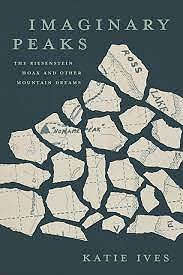
Ives is known for her meticulous research, deft editing skills and evocative historical and cultural mountaineering stories in Alpinist magazine. It should come as no surprise, therefore, that the writing and craft in Imaginary Peaks is of an equally high calibre. Using the Riesenstein Hoax as a vehicle for exploring the wider concept of 'false summits' — those imaginary peaks — as a social, cultural and literary phenomenon, Ives also weaves personal stories of her own vivid imagination and climbing life.
Since childhood, Ives has had recurring dreams of an imaginary peak that towers over her parents' garden. 'I'm still not sure what my own dream mountain represents. All I know is that my longing for something nebulous and unnamed persists. If I had to pick a word, the closest one I can think of, now, is hope,' she writes.
Venturing into fictional realms such as Tolkein's Misty Mountains, legendary ranges including the Mountains of the Moon and the mythical Meru Peak, Ives' scope is varied. In an unfinished 1952 novel, René Daumal wrote about one of the most famous imaginary peaks in climbing history. His Mount Analogue, higher even than Everest, remains concealed at all times except during the light of a clear dusk or dawn. "And what defines the scale of the ultimate symbolic mountain," he wrote, "is its inaccessibility to ordinary human approaches." The summit must also be inaccessible, and for the mountain to serve as a threshold between the earthly and the divine, he explained, it had to reflect both fantasy and geographical reality: "The door to the invisible must be visible." This liminal space where tangible landscapes and imagined realms merge and co-exist (or not) and how these 'mountains of the mind' influence our culture as humans and climbers is what so intrigues Ives.
Ives also asks whether as a mountaineering editor, she too could fall victim to such a hoax; especially considering the photographic and cartographic tools available in this digital age, in addition to a growing expectation for fast news over facts due to the influence of social media. It begs the question: how do we know whether or not a climber is telling the truth? How reliable is any narrative?
In all, the book is a fact-filled exploration of human reverie and desire. But there's no whimsy here; Ives' sense of wonder towards both the physical and metaphysical mountains is serious and studious. A fascinating read for dreamers and fans of mountain literature, history, cartography, mythology and adventure.
Minarets in the Mountains - A Journey Into Muslim Europe
By Tharikh Hussain (Bradt Guides)
A trip to the Western Balkans with his family proved eye-opening for writer, journalist and author Tharik Hussain. The Western Balkans and their mountains are home to the largest indigenous Muslim population in Europe; Muslims with blonde hair and blue eyes — 'a hidden Muslim Europe.' In his latest book Minarets in the Mountains, Hussain explores this lesser-known corner of Muslim history, and traces European Islamophobia back to its roots. The result is a deeply engaging study of religion and culture that will force you to reimagine Europe's religious history and modern-day make up.
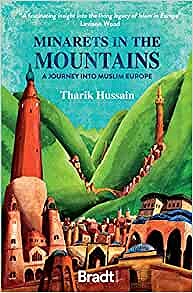
To a Western reader, any mention of the Balkans is likely to conjure images of news reports from the Yugoslav Wars covering atrocities such as genocide, crimes against humanity and ethnic cleansing. These images are impossible to forget, but in the wake of these conflicts, Hussain demonstrates that a significant degree of social cohesion and peace has risen from the shadow of war.
Replicating the journey of Ottoman traveller Evliya Celebi, Hussain and his family explore mystical Islamic Sufi mountain lodges, Ottoman hammams and ancient mosques in towns and villages across Bosnia and Herzegovina, Serbia, Kosovo, North Macedonia, Albania and Montenegro, where Muslims, Christians, Jews and Pagans are often found living together harmoniously as neighbours without tension or division.
In the Serbian town of Novi Pazar, he finds an unexpectedly large Muslim population, making it 'more Muslim than some 'Muslim' countries.' As the journey progresses, Hussain examines his own religious and cultural identity and that of his mixed race family, he asks questions about what identity is, how it is formed and — crucially — who has the right to ascribe an identity to an individual or group, or take it away?
Longlisted for the Baillie Gifford Prize for Non-Fiction 2021, the book has already earned critical acclaim in a number of travel and culture writing prizes and is the first English book to explore indigenous Muslim Europe in the 21st Century, and - more significantly - the first book to do so by a Muslim writer.
Time on Rock: A Climber's Route into The Mountains
By Anna Fleming (Canongate Books)
Coming soon: Due for release on 6 January 2022, writer and Mountain Leader Anna Fleming's debut book Time on Rock is a lyrical story of a young woman's climbing apprenticeship with a socio-cultural and geological bent. Fleming's ten-year climbing journey takes her from a dusty indoor wall in Liverpool to the gritstone outcrops, Welsh slate, Lake District rhyolite, Moray sandstone, Cuillin gabbro, Cairngorm granite and Kalymnian limestone. The journey is one of self-discovery, but Fleming's scope is far broader.
Along the way, Fleming makes astute observations on people and place and explores our historical and cultural ties to these wild places, delving into the histories of their local people — from Welsh slate quarrymen to dry stone wallers in the Lakes — and the storied ascents made in the areas she visits.
As Fleming explains, each rock type has a unique character which influences not only the way we climb on its surface, but also shapes our ambitions, fears and the stories we tell over pints in the pub. She deftly describes the physical and mental challenge of climbing in a manner that is accessible and compelling to both climbers and non-climbers — no easy task.
Fleming also writes openly about the challenges of climbing as a woman in a male-dominated sport (managing contraception and climbing performance throughout the hormonal cycle, anyone?), helping to balance out the lack of female perspectives in mountain literature.
'An affinity for rock develops slowly. It is not something you can easily pin down, explain or quantify. It is an embodied knowledge, acquired through craft, care and practice. It is a relationship that is constantly evolving, developing and changing. In the process, for better or worse, the medium becomes engrained into your being. We shape the rock, the rock shapes us.'
Helen Mort's cover quote is both high praise and on point: "It reminds me of Nan Shepherd, only the kind of Nan Shepherd I could go for a pint with."
Stay tuned for a UKC interview with Fleming about the book. Look out for her book tour in bookshops across the UK.


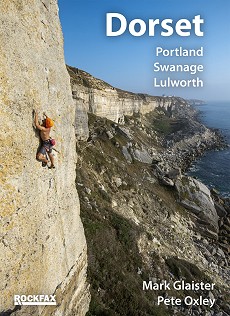
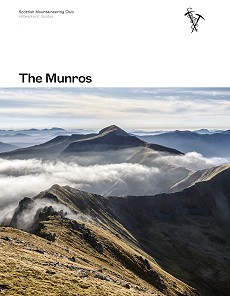
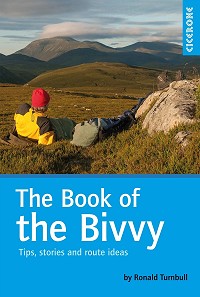
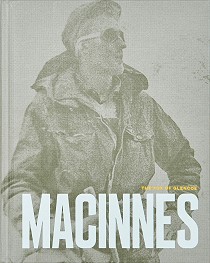
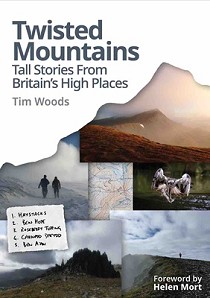
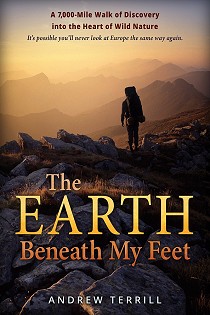
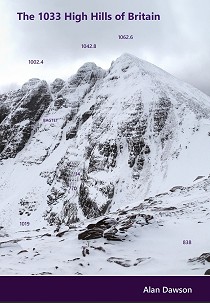
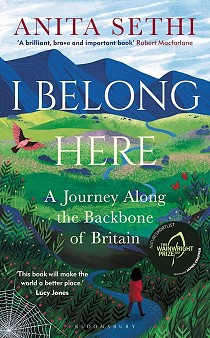


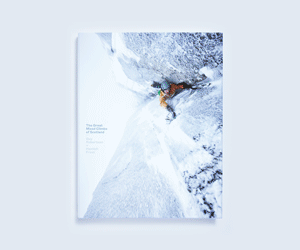










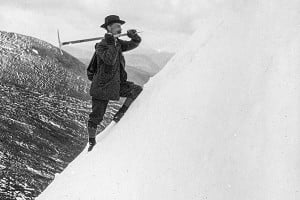



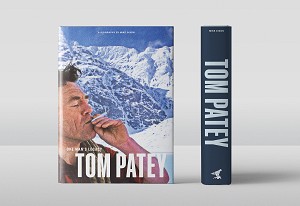
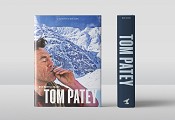

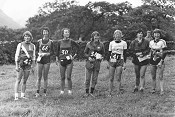

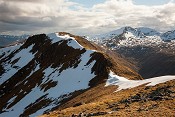

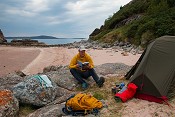



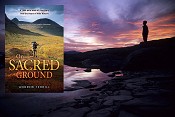


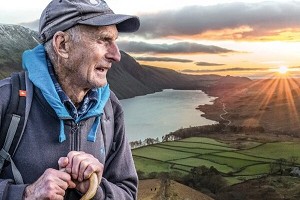

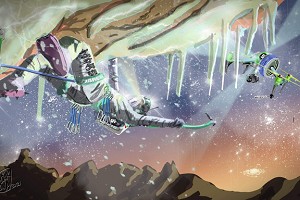

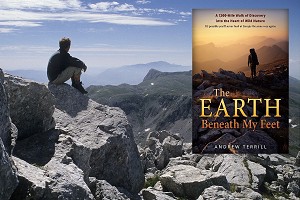
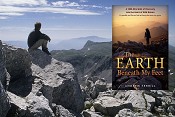
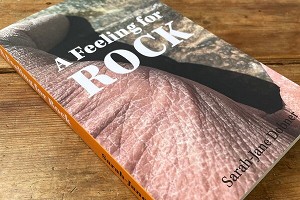
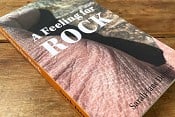
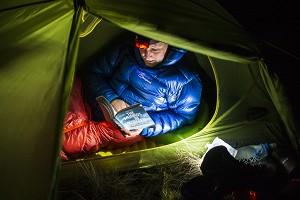
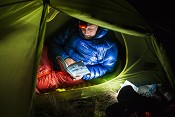
Comments
Those are all great books, but can I be cheeky and add one to the list: The Climbers Against Cancer Charity Calendar is the perfect stocking filler and the thing that set's it apart from all the others is that EVERY PENNY goes to support CAC in funding cancer research :-)
https://www.climbersagainstcancer.org/shop/rucksack-club-cac-calendar/
Cheers, Dom
Can I also be cheeky and add this one from a well know UKCer of days gone by.
https://www.v-publishing.co.uk/books/narratives/the-farthest-shore/
Missed out the recent biography of T Graham Brown which is top of my list!
Have I missed any news on UKC about the Boardman Tasker results?
http://www.boardmantasker.com/news/2021/11/20/2021-boardman-tasker-award-for-mountain-literature-the-winner